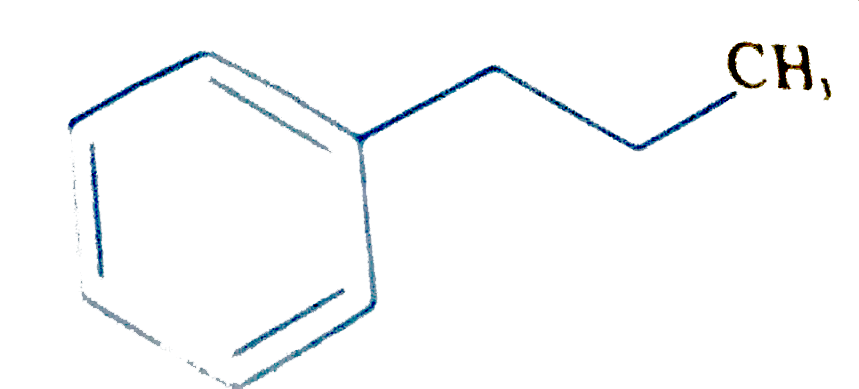Show how to synthesize 3-decyne from acetylene along with necessary alkyl halides.
To synthesize 3-decyne from acetylene (ethyne) using alkyl halides, we can follow these step-by-step instructions:
Step 1: Starting Material
Start with acetylene (ethyne), which has the formula C2H2 and contains a triple bond between the two carbon atoms.
Step 2: Deprotonation of Acetylene
Use sodium amide (NaNH2), a strong base, to deprotonate acetylene. This will remove one of the acidic hydrogens from acetylene, creating a nucleophile:
C2H2+NaNH2→C2H−+NH3
Here, C2H− is the acetylide ion.
Step 3: First Alkylation
Next, react the acetylide ion with an appropriate alkyl halide to introduce a 6-carbon chain. For this, we can use 1-bromohexane (C6H13Br):
C2H−+C6H13Br→C8H15C≡C
This reaction forms 1-heptyne.
Step 4: Second Deprotonation
Now, we need to deprotonate the terminal alkyne (1-heptyne) again using another equivalent of sodium amide (NaNH2):
C8H15C≡C+NaNH2→C8H15C−+NH3
Step 5: Second Alkylation
Finally, react the newly formed acetylide ion with another alkyl halide, which can be 1-bromoethane (C2H5Br):
C8H15C−+C2H5Br→C10H18C≡C
This results in the formation of 3-decyne.
Final Product
The final product of this synthesis is 3-decyne, which has the structure:
C3H6≡C−C6H12
Summary of Reagents Used:
- Reagents:
- Sodium amide (NaNH2)
- 1-bromohexane (C6H13Br)
- 1-bromoethane (C2H5Br)
Start with acetylene (ethyne), which has the formula C2H2 and contains a triple bond between the two carbon atoms.
Use sodium amide (NaNH2), a strong base, to deprotonate acetylene. This will remove one of the acidic hydrogens from acetylene, creating a nucleophile:
C2H2+NaNH2→C2H−+NH3
Here, C2H− is the acetylide ion.
Next, react the acetylide ion with an appropriate alkyl halide to introduce a 6-carbon chain. For this, we can use 1-bromohexane (C6H13Br):
C2H−+C6H13Br→C8H15C≡C
This reaction forms 1-heptyne.
Now, we need to deprotonate the terminal alkyne (1-heptyne) again using another equivalent of sodium amide (NaNH2):
C8H15C≡C+NaNH2→C8H15C−+NH3
Finally, react the newly formed acetylide ion with another alkyl halide, which can be 1-bromoethane (C2H5Br):
C8H15C−+C2H5Br→C10H18C≡C
This results in the formation of 3-decyne.
The final product of this synthesis is 3-decyne, which has the structure:
C3H6≡C−C6H12
- Reagents:
- Sodium amide (NaNH2)
- 1-bromohexane (C6H13Br)
- 1-bromoethane (C2H5Br)
Topper's Solved these Questions
- HYDROCARBON BOOK - MOTIONCHAPTER - HYDROCARBON EXERCISE - QUESTIONS
6 Videos
- HYDROCARBON BOOK - MOTIONCHAPTER - HYDROCARBON EXERCISE - Exercise - 1
85 Videos
- GRIGNARD REAGENTBOOK - MOTIONCHAPTER - GRIGNARD REAGENTEXERCISE - EXERCISE-2
16 Videos
- IONIC EQUILIBRUIMBOOK - MOTIONCHAPTER - IONIC EQUILIBRUIMEXERCISE - Exercise -4 (Level -II)
14 Videos
Similar Questions
Knowledge Check
Symmetrical alkane can be prepared from alkyl halide by,
AWurtzs reactionBCannizzaros reactionCHoffmanns reactionDMendius reaction
How will you prepare acetaldehyde from acetylene ?
View SolutionShow how you might synthesize 2-propanamine from a three-carbon starting material that is a ketone, aldehyde, nitrile, or amide.
View SolutionShow how will you synthesie:
i. 1-Phenylethanol form a suitable alkene.
ii. Cyclohexylmethanol using an alkyl halide by SN2 reaction.
iii. Pentan-1-ol using a suitable alkyl halide.
View SolutionShow how will you synthesie:
i. 1-Phenylethanol form a suitable alkene.
ii. Cyclohexylmethanol using an alkyl halide by SN2 reaction.
iii. Pentan-1-ol using a suitable alkyl halide.
View SolutionShow how you would synthesize each compounds from starting materials containing no more than six carbon atoms.

View SolutionHow can alkanes be prepared from an
alkyl halide?
View SolutionShow how will you synthesise :
(i) 1- phenylethanol from a suitable alkene,
(ii) cyclohexylmethanol using an alkyl halide by an SN2 reaction.
(iii) pentan-1-ol using a suitable alkyl halide?
View Solution

 from benzene?
from benzene?